First Look: 2017 Fox 32 Step-Cast Suspension Fork
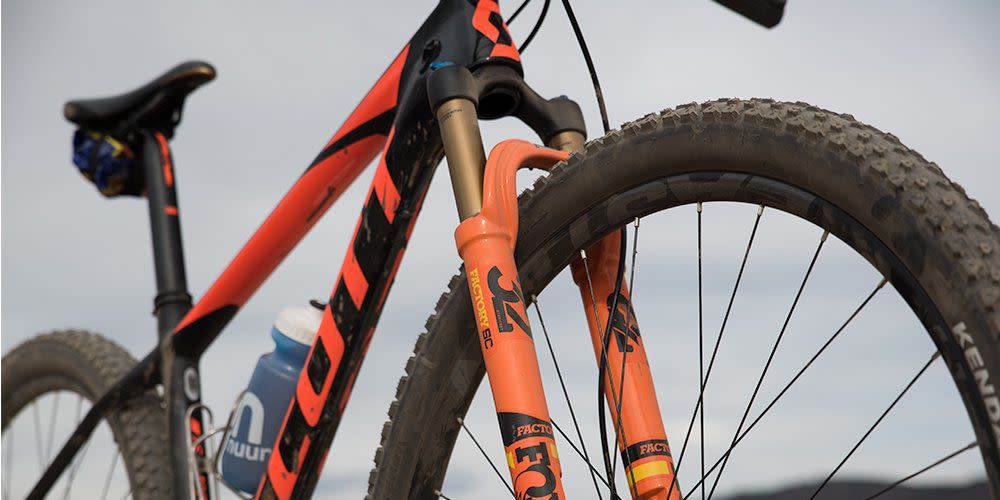
April is usually when Fox starts to reveal next year’s product line. And right on schedule, the company has just unveiled the first of the its 2017 products: the 32 Step-Cast (SC), a short-travel, lightweight fork aimed at cross-country racers.
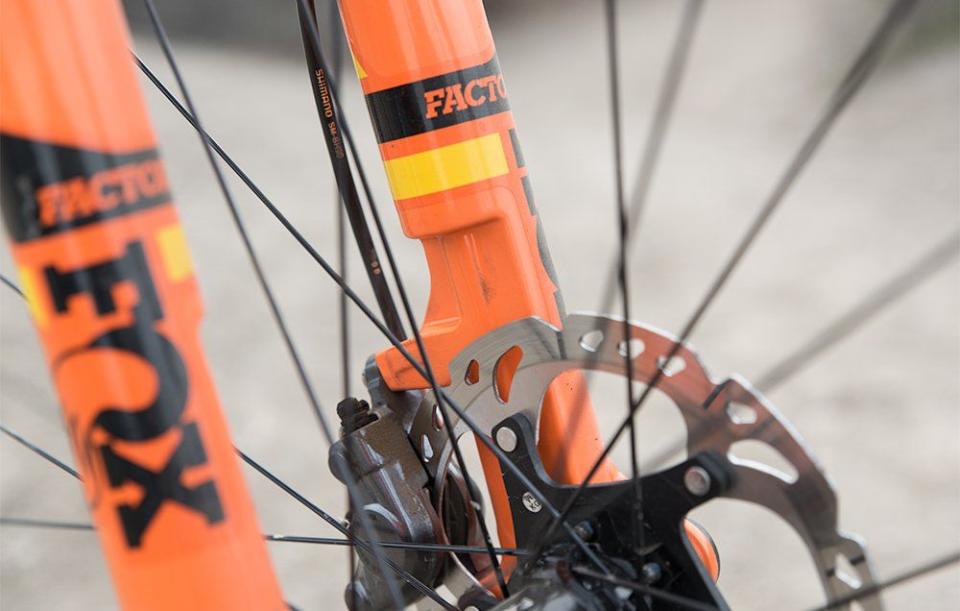
Narrower Stance Saves Weight
Like the 2016 32, the 2017 SC uses 32mm upper tubes, but FOX was able to pull weight out by pushing the SC’s legs 10 millimeters closer together, reducing the amount of material used. The lower legs are hollowed out to save weight, and cut away to regain the space for spokes and the disc rotor (space lost when the legs were pushed closer).
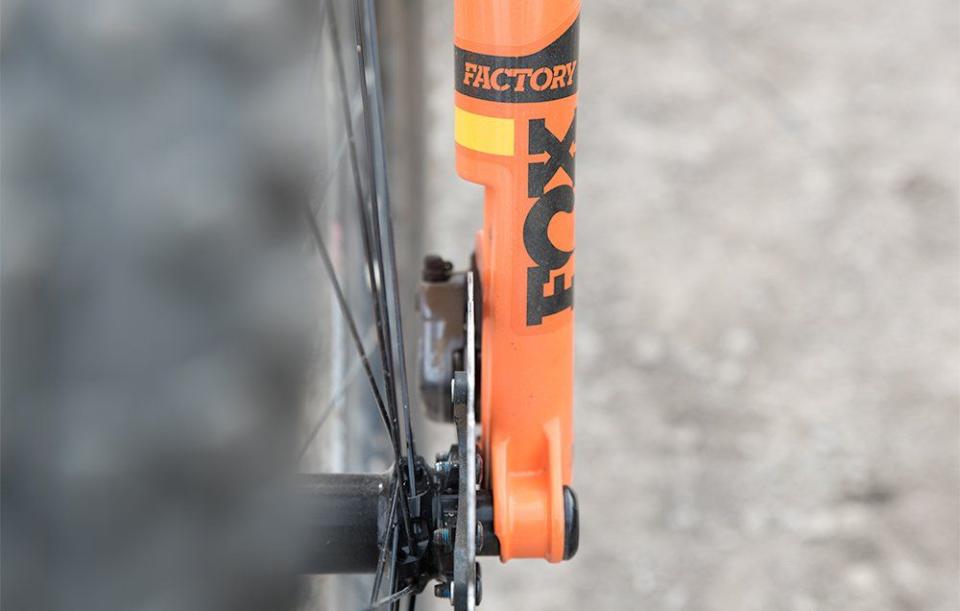
These tricks pull about a half pound out of the fork in both wheel sizes (27.5 and 29), putting claimed weights below three pounds. This was confirmed on my scale: My 29er review fork weighed just under three pounds with a cut steerer. That’s very light for a 29er suspension fork; for comparison, a RockShox SID XX World Cup for 29er has a claimed weight of 3.3 pounds.
Fore/aft stiffness is unaffected by the narrower stance, but torsionally the SC is slightly softer than the 2016 32.
RELATED: Fox Unveils 2016 34 Float Fork and Float DPS EVOL Shock
Air Spring and Dampers
The 32 SC uses Fox’s latest Float air spring technology, with self-equalizing negative spring. Air volume spacers allow the spring curve to be tuned to the rider’s liking: More spacers and the spring provides a more supportive mid-stroke and increased bottoming resistance; fewer spacers and the fork has a plusher, deeper feel. The SC’s air spring is the same as the regular 32.
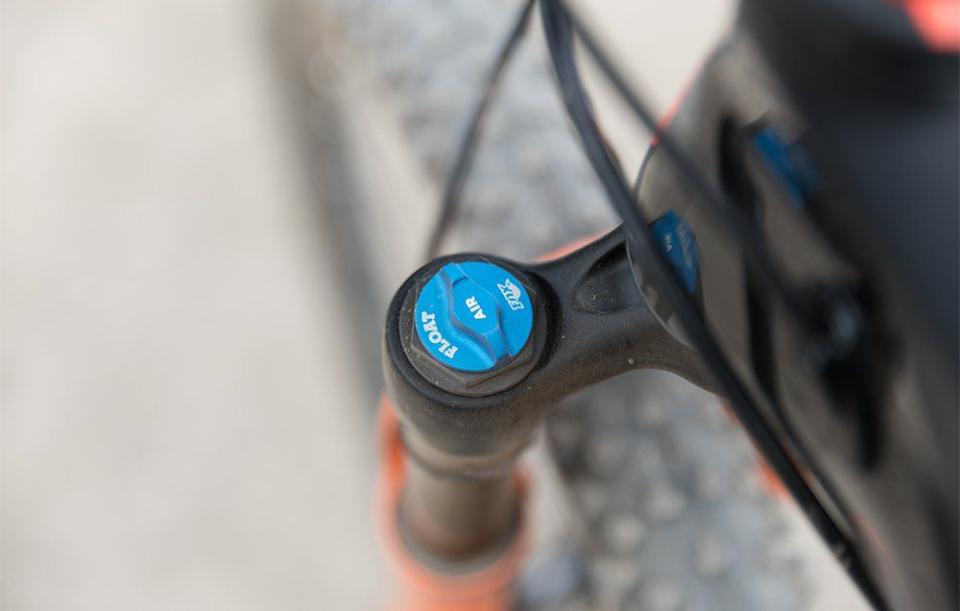
Factory models use FOX’s fourth-generation FIT damper. In standard form, it offers three on-the-fly positions—open, medium, and firm—and the feel of the open mode can be fine tuned with the black low-speed compression adjuster. The SC gets a new damper tune, explains Mark Jordan, FOX’s global communications manager for bicycles: “Low-speed compression damping is basically the same [as the 2016 32], bit mid-to-high-speed is lighter.”
An optional handlebar remote is offered. The 32 SC is also offered with FOX’s electronic iRD remote.
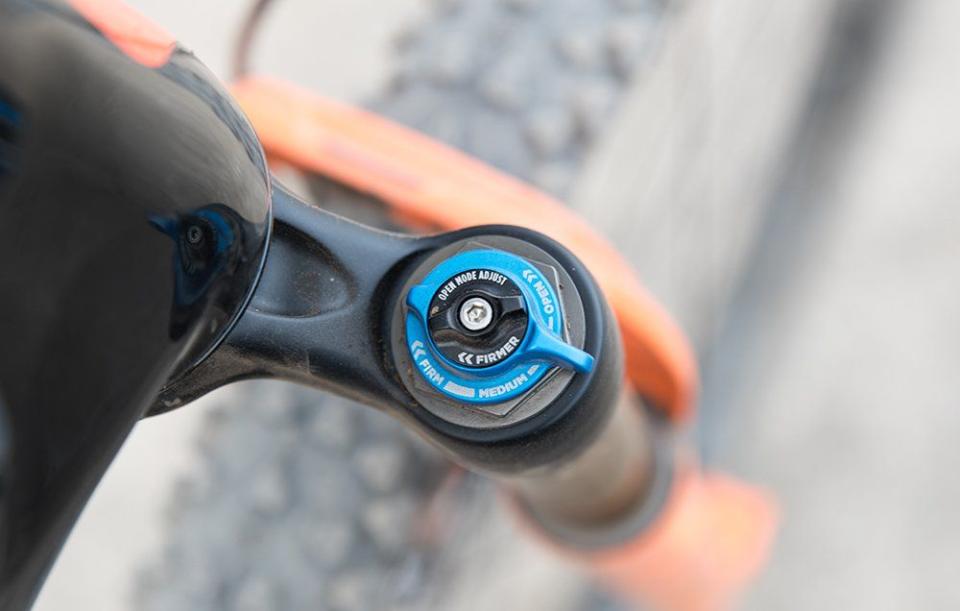
The 32 SC is also offered in the Performance-level platform with a new damper called FIT GRIP. This damper is less complex, and less expensive to produce, than the FIT4 says Jordan. It has open, medium, and firm modes with micro-adjustment between settings and dual-circuit rebound like FIT4, but it does not have the FIT4’s adjustable low-speed compression.
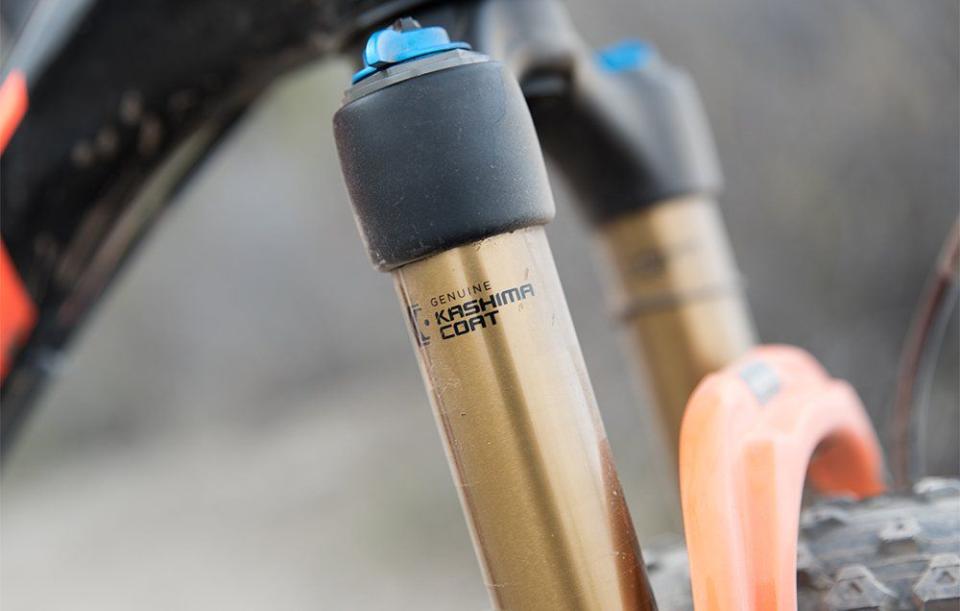
Models and Pricing
The 32 SC will be available in May. It is only offered with 100mm of travel and is available for 27.5-inch wheels with 44mm offset (180mm rotor max), and for 29-inch wheels with 44 or 51mm offset (203mm rotor max).
All versions have clearance for up to 2.3-inch wide tires and are offered with either 15x100mm or 15x110 (AKA Boost) hub spacing. In keeping with the lightweight theme, the 32SC ships with FOX’s lightweight Kabolt bolt-on thru-axle. Three colors are offered: gloss orange, gloss white, or matte black.
Like other forks in the FOX line, Factory SC models get low-friction Kashima-Coat upper tubes.
Models offered are:
• Factory 32 SC with FIT4 damper: $899
• Factory 32 SC with FIT4 Damper and remote: $969
• Factory 32 SC with FIT iRD electronic damper adjustment: $1,569
• Performance 32 SC with FIT GRIP damper: $619
RELATED: 2016 Fox Factory 34 Float 27.5+ Fork Announced
First Impressions
FOX sent me a 2017 Factory 32 SC 29 with 15x110 front axle to ride before the fork’s public announcement. A comedy of shipping errors meant I got it much later than I was supposed to and left me without much testing time. Still, I got to ride the new fork on familiar trails.
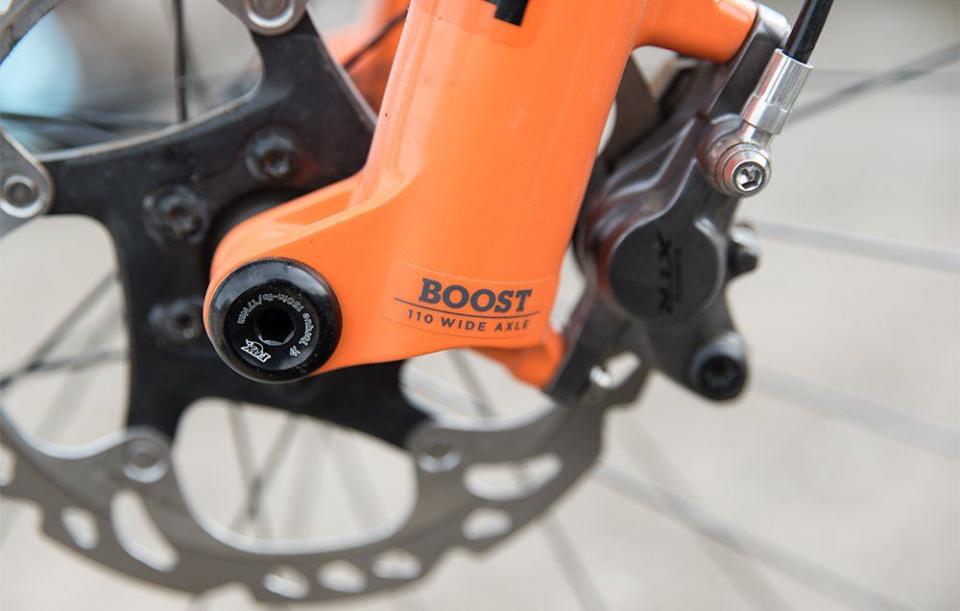
This is a fork aimed at XC racers, and the main thrust of this fork is weight reduction, not new spring or damper technologies, so I used a Scott Scale 900 SL hardtail to test it. Even with a mid-range aluminum wheelset and wider, sturdier tires, the finished bike still came in under 21 pounds. With cash to burn, this bike could easily come in under 20 pounds.
It could be all in my head, or because I normally ride 28 pound full suspension trail bikes, but the half-pound weight reduction seems noticeable: The Scott’s front end felt very light, and easy to pick up and flick around.
With FOX’s latest spring and damper technology inside, the 32 SC is a very smooth and sensitive fork, and does a great deal with just 100mm of travel. It finds traction where little is available (which I appreciate in my dry, dusty, and loose conditions), and keeps the bike settled and hooked up in rougher situations. With the 32 SC on the front, the Scott rode quietly, flowing with the terrain with no skipping and pinging down the trail.
Firm mode is what you would expect from an XC fork, and it makes the bike feel a bit more efficient when the terrain is smoother. The blowoff is very good, so you’re not facing doom if you forget to unlock it at the start of a descent.

The fork is surprisingly sensitive in medium mode, and it took me a while to feel out the differences between the two. After a bit of back and forth, I found the medium mode tames unwanted motion—bobbing from out of the saddle pedaling and the like—better , while open is more hooked up when traction is most scarce.
This is exactly what I would expect, though I was surprised how little daylight there seemed to be between the modes; they seemed closer than the open and medium modes of other FOX FIT4 forks I've ridden recently. With the 32 SC, the medium mode is sensitive enough that I left it there most of the time, excepting paved approaches to trailheads, and sections of trail with meager braking and cornering traction.
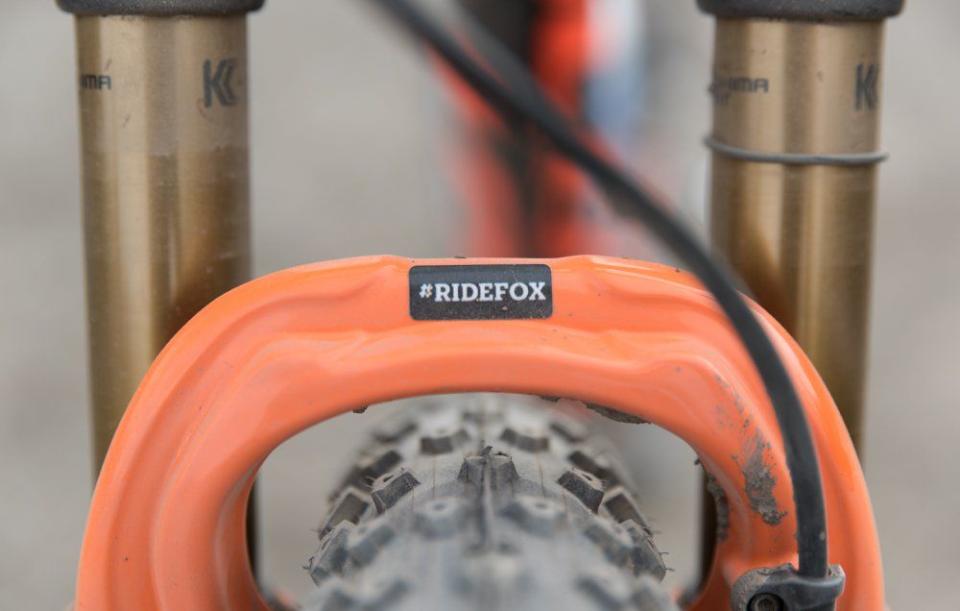
I rode the fork with two air-volume spacers, the stock configuration. While this was adequate, I’ll be adding at least one spacer (the fork can take up to four) to get a more supportive and progressive spring curve. This should also allow me to use a tad less spring pressure for even better small-bump compliance.
Chassis stiffness seemed acceptable, and certainly stiff enough for XC racing with a hardtail and short-travel full suspension bikes.
Remarkably, it seems like FOX was able to pull a significant amount of weight out of its premier XC-race fork with no penalty. Though it's pitched towards an increasingly-niche arm of the sport, the 32 SC’s manners are so good it’s impressive outside the confines of a race course too.
You Might Also Like

